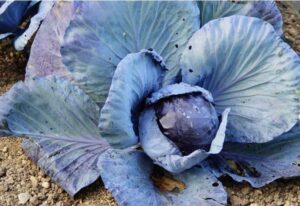Introduction: Red cabbage, with its vibrant color and nutritious properties, is a popular vegetable to grow in home gardens. In this article, we will provide you with valuable tips, techniques, and secrets to successfully cultivate red cabbage. Whether you are a seasoned gardener or a beginner, this guide will help you achieve a bountiful harvest of delicious and healthy red cabbage.
Choosing the Right Varieties
Selecting the appropriate red cabbage variety is crucial for a successful growing experience. Consider the following factors when choosing your red cabbage seeds:
- Climate and Season: Opt for varieties that are suitable for your local climate and growing season. Some varieties are better suited for cooler climates, while others thrive in warmer regions.
- Disease Resistance: Look for varieties that have resistance to common cabbage diseases such as clubroot and fusarium wilt. Disease-resistant varieties ensure a higher chance of successful cultivation.

Preparing the Soil
Proper soil preparation sets the foundation for healthy red cabbage growth. Follow these steps to prepare your soil:
- Soil Type: Red cabbage prefers well-draining soil rich in organic matter. Ensure the soil pH is between 6.0 and 7.5 for optimal growth.
- Soil Enrichment: Prior to planting, incorporate organic compost or well-rotted manure into the soil to improve its fertility. This will provide essential nutrients and enhance moisture retention.
Sowing and Transplanting
The method of sowing and transplanting red cabbage greatly influences its growth and development. Here’s what you need to know:
- Sowing Seeds: Start by sowing the seeds indoors in trays or seedling pots 6-8 weeks before the last frost date. Keep the soil moist and maintain a temperature between 60-70°F (15-21°C) for successful germination.
- Transplanting Seedlings: Once the seedlings have grown 3-4 true leaves, transplant them into the garden. Ensure proper spacing, typically 12-18 inches (30-45 cm) between plants, to allow for proper airflow and growth.
Caring for Red Cabbage: To ensure healthy growth and development of red cabbage, follow these care tips:
- Watering: Red cabbage requires consistent moisture. Water the plants deeply and regularly, aiming for 1-1.5 inches (2.5-3.8 cm) of water per week. Avoid overhead watering to prevent disease spread.
- Fertilization: Apply a balanced fertilizer rich in nitrogen, phosphorus, and potassium according to the package instructions. Side-dress the plants with fertilizer during the growing season to provide additional nutrients.
Pest and Disease Management: Protecting your red cabbage from pests and diseases is essential for a successful harvest. Here’s how to manage common issues:
- Pest Control: Monitor your plants regularly and address pest infestations promptly. Use organic pest control methods such as handpicking insects or using natural insecticides. Common pests include cabbage worms, aphids, and slugs.
- Disease Prevention: Practice crop rotation to prevent the buildup of soil-borne diseases. Proper spacing between plants promotes airflow and reduces the risk of fungal diseases. Remove and destroy any infected plants to prevent the spread of diseases.
Harvesting and Storage: Knowing the right time to harvest and properly storing your red cabbage ensures the best quality and flavor:
- Harvesting: Red cabbage is typically ready for harvest 70-90 days after transplanting. The heads should be firm and dense. Use a sharp knife to cut the cabbage at the base, leaving a few outer leaves intact.
- Storage: Store harvested red cabbage in a cool and humid place, ideally at temperatures between 32-40°F (0-4°C). Wrapping the cabbage in plastic or placing it in perforated bags helps retain moisture and prolong shelf life.
Conclusion
Growing red cabbage can be a rewarding experience, providing you with nutritious and vibrant additions to your meals. By following these tips, techniques, and secrets, you’ll be well on your way to a successful red cabbage harvest. Enjoy the process and savor the flavors of your homegrown red cabbage.


